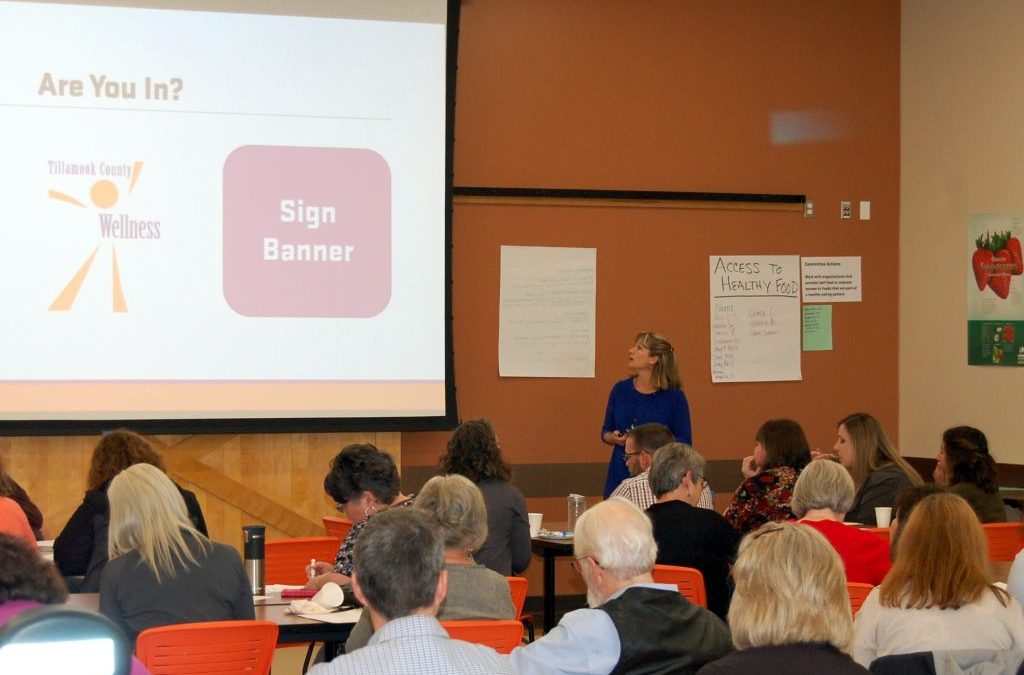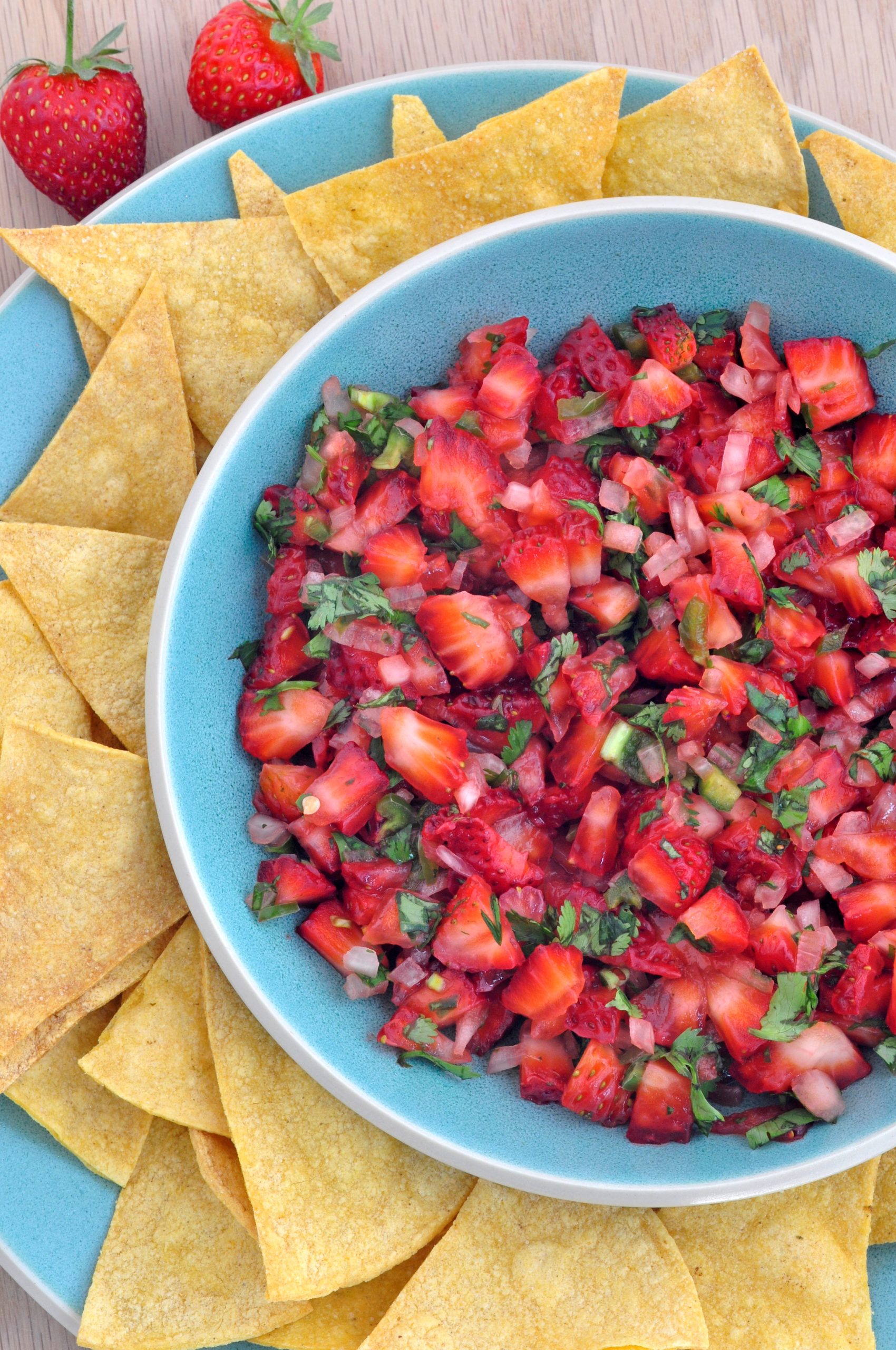
by Guest | Jun 22, 2018 | Being Well
Tillamook County Wellness continues it’s work because of the extraordinary level of engagement and collaboration among community partners and the community. The series “Why I’m In,” will feature what has inspired and motivated these efforts toward a common goal of improving community health. Michelle Jenck, health consultant, owner of Wholly Healthy LLC and the coordinator for Tillamook County Wellness under the Tillamook County Community Health Centers, kicks off the series.
“WHY I’M IN …” Michelle Jenck
What brought you/your organization into the Year of Wellness, now Tillamook County Wellness?
MICHELLE: For me, personally, I fell into this work by accident. Despite having severe asthma as a child, I began to exercise in high school and continued to expand my fitness practices through college and into my adult life. I found that I simply felt better, had better mental clarity and, well, honestly, my clothes just fit better when I worked out regularly. All that activity led me to develop a personal sense of awareness connecting how I moved with how I felt. Later, I began to do the same thing with my nutrition habits. A great deal of this motivation came from raising a child with special needs, observing how movement and nutrition played a role in his development and academic and social success. Anyone who knows me, knows I have been a passionate advocate for using movement and nutrition to help kids be more successful. That reputation led to me being “tapped” by Commissioner Baertlein for this work.
What changes have you seen as a result of YOW/Tillamook County Wellness?
MICHELLE: Since beginning as YOW/Tillamook County Wellness coordinator in 2015, I have had the pleasure of working with dozens of people who genuinely want to effect positive changes in their communities, workplaces, families and within themselves. There has been a shift in attitudes about our ability to improve population health. Ten years ago, I told a medical professional that I wanted to help children through improving P.E. and school nutrition. I was told, “Well, good luck beating your head against that brick wall.” In my experience, decision makers and citizens alike no longer view these kinds of changes as a pipe dream. They believe it is possible. And I think they believe that, in part, because of the work we are doing and because maintaining the status quo is no longer an option.
What have you learned from being involved in this work?
MICHELLE: I had a lot of assumptions about how things worked in terms of population health, and how I thought things should work. One thing I have learned is that there are more people working on societal challenges than most people are aware of. And, more importantly, these individuals and organizations do what they do because they want to be part of the solution. I have learned that there are barriers to be being fully effective and efficient in this work and many of these are outside of our control. Where we can make a difference, though, is in our own community, where we live and work and in our own family and personal life. We don’t always have to wait for a government policy to change or for special funding. We can figure out our own work arounds, our own funding sources and make it happen.
What are your hopes for this work as it relates to you/your organization?
MICHELLE: For me, my wildest hopes are being realized. We are achieving critical mass in working toward having collective impact. My only goal was to be an agent of change and I feel like I have been able to do that.
What are your hopes for this work as it relates to changing population health in Tillamook County?
MICHELLE: To demonstrate, at a grass-roots level, that measurable improvements to population health can be made and sustained. Specifically, though, my hope is that we raise children who know their worth and potential and who have the necessary skills to bring that to fruition. When people feel good and feel capable, they make better life choices and that translates to better health over their lifetime.

by Guest | Jun 22, 2018 | Recipes
Recipe Source: Recipe and photo from www.FoodHero.org
Number of servings:16
Time for preparation (including preparation and cooking): 20 min
Ingredients:
1 1⁄2 cups fresh strawberries, chopped small (about 1/2 pound)
1⁄2 jalapeno pepper, minced
1⁄4 cup onion, minced
2 Tablespoons cilantro, finely chopped
1 1⁄2 teaspoons lime juice
Directions
- Mix all ingredients together in a bowl. Flavors will blend if refrigerated for 30 minutes or more before serving.
- Refrigerate leftovers within 2 hours.

by Guest | Jun 15, 2018 | Recipes
Recipe Source: Recipe and photo from www.FoodHero.org
Number of servings: 6
Time for preparation (including preparation and cooking): 10 min
Ingredients:
4 bananas
24 ounces low-fat vanilla yogurt
2 cups low-fat granola
Directions
- Peel and chop bananas.
- Take half of the fruit and split it between the bottom of six cups or bowls.
- Take half of the yogurt and split it between each cup or bowl, placing it on top of the fruit.
- Sprinkle each cup with 1/4 cup granola.
- Repeat layers.
- Refrigerate leftovers within 2 hours.
Notes
- Drizzle with honey and top with chopped nuts.
- Try other fruits, such as strawberries, apples, oranges, etc. (Use 2 cups fruit for the recipe.)
- Use different flavors of yogurt, such as lemon or strawberry, or plain for less sugar.
- Honey is not recommended for children under 1 year old.

by Guest | Jun 15, 2018 | Eat Well
June is Dairy Month! Here in Tillamook County, we have a lot to celebrate. Our friends at the Oregon Dairy and Nutrition Council have provided us with an update on the topic of dairy fat.
Dairy fat has been in the news lately. Headlines say saturated fat is ok and that’s caused a bit of confusion, especially when some health recommendations still call for fat free and low fat. What do the experts say?
Besides being delicious, dairy foods are also an irreplaceable part of a healthy diet because they are packed with protein, calcium, and lots of other important vitamins and minerals. The 2015-2020 Dietary Guidelines for Americans recommend eating low-fat or nonfat dairy foods for everyone. But is there room for the higher fat dairy foods like whole milk, whole milk yogurt, cheese, and ice cream in your diet?
To answer that question, let’s begin by exploring the current science of fats and dairy fat.
First, your body needs fat for energy and growth. Fat helps us absorb some vitamins and also produces hormones that are important to our bodies. There are different types of fats and foods contain mixtures of different fats. Saturated fats are one type of fat found in animal fats such as meat and dairy foods, and some plant based fats such as coconut and palm.
What do we know about saturated fat?
For more than 70 years, scientists have linked diets high in saturated fat and cholesterol to an increased risk of heart disease (Dennett). Recently this conclusion is being challenged by scientists. We reported a couple of years ago on the newer research showing saturated dairy fats may not be linked to heart disease in healthy adults. (Link to May 2016 Wellness article “The Whole Truth about Dairy Fat”) Let’s look at what we know now in 2018.
What have scientists found in the past couple of years?
There have been some recent, interesting studies looking at the effects of dairy fat on the risk of developing heart disease (Miller). A 3 week study done in Denmark of 17 healthy adults found that drinking about 2 cups of whole milk a day instead of skim milk did not increase markers for heart disease: total cholesterol, LDL cholesterol, or triglycerides. Also, drinking whole milk instead of skim milk increased the good HDL-cholesterol. (Engel)
A review of dairy and heart health found there was no evidence that eating dairy foods is bad for heart health. Full fat dairy foods were found to be neutral in terms of risk of heart disease (Drouin-Chartier). Maintaining a healthy weight is important for adults and a cup of whole milk does have 70 more calories than a cup of skim milk. But this research suggests that if foods and physical activity are balanced to maintain weight, whole milk can be a part of the diet of healthy adults. (Engel)
Researchers now consider saturated fat as a very large category of different substances. They have questioned the connection that all saturated fats influence the risk of heart disease in the same way. (Mozaffarian) About two-thirds of the fatty acids in milk are saturated fat and there are more than 400 types of fatty acids in milk (Dennett). A 2012 study looking at different saturated fat-rich foods, found dairy fat was associated with less risk of heart disease than other saturated fat-rich foods (De Oliviera).
So how do dairy foods fit in my diet?
Can I eat ice cream, butter, and cheese? The simple answer is, yes. Dairy foods are an important source of protein, calcium, vitamin D, and other nutrients. Three servings of dairy foods a day are part of a healthy eating pattern which also includes eating a variety of vegetables, fruits, whole grains, and lean proteins.
The foods you choose are one part of a healthy lifestyle. Other important factors are maintaining a healthy weight, being physically active, not smoking, and drinking alcohol in moderation. Leading a healthy lifestyle will help us prevent chronic diseases like heart disease and diabetes.
So stay tuned for more research on saturated fats. Focus on your lifestyle choices and enjoy nutritious dairy foods of varying fat contents (including a little ice cream) along with vegetables, fruits, lean proteins, and whole grains.
References:
Dennett C. 2016. The truth about dairy fats. Today’s Dietitian. 18 (10): 26.
http://www.todaysdietitian.com/newarchives/1016p26.shtml
De Oliveira Otto MC, Mozaffarian D, Kromhout D, et al. 2012. Dietary intake of saturated fat by food source and incident cardiovascular disease: the Multi-Ethnic Study of Atherosclerosis. Am J Clin Nutr. 96 (2): 397-404.
https://www.ncbi.nlm.nih.gov/pmc/articles/PMC3396447/
Drouin-Chartier JP, Brassard D, Tessier-Grenier M, Cote JA, Labonte ME, Desroches S, Couture P, Lamarche B. 2016. Systematic review of the association between dairy product consumption and risk of cardiovascular-related clinical outcomes. Adv Nutr. 7 (6): 1026-1040. https://academic.oup.com/advances/article/7/6/1026/4568635
Engel S, Elhauge M, Tholstrup T. 2018. Effect of whole milk compared with skimmed milk on fasting blood lipids in healthy adults: a 3-week randomized crossover study. Eur J Clin Nutr. 72 (2): 249-254. https://www.ncbi.nlm.nih.gov/pubmed/29229955
Guest. TillamookCountyHealthMatters.org. June 23, 2016. The “Whole” Truth about Dairy Fat. http://tillamookcountyhealthmatters.org/the-whole-truth-about-dairy-fat/
Miller G. National Dairy Council. February 27, 2018. Whole Milk Dairy Foods: Exploring the Evolving Science. https://www.nationaldiarycouncil.org/content/2018/milk-fat-exploring-the-evolving-science
Mozaffarian D. 2016. Dietary and policy priorities for cardiovascular disease, diabetes, and obesity: a comprehensive review. Circulation.133 (2): 187-225.
http://circ.ahajournals.org/content/133/2/187.long

by Guest | Jun 8, 2018 | Recipes
Recipe Source: Recipe and photo from www.FoodHero.org
Number of servings: 4
Time for preparation (including preparation and cooking): 10 min
Ingredients:
1 cup orange juice
1⁄2 cup pineapple juice
1⁄2 cup low-fat plain or vanilla yogurt
1 banana, peeled and sliced
2 cups fresh spinach leaves
crushed ice
Directions:
- Combine all ingredients in a blender.
- Puree until completely smooth.
- Serve immediately.
- Refrigerate leftovers within 2 hours.
Notes:
For a thicker smoothie, use frozen fruit instead of fresh fruit.





